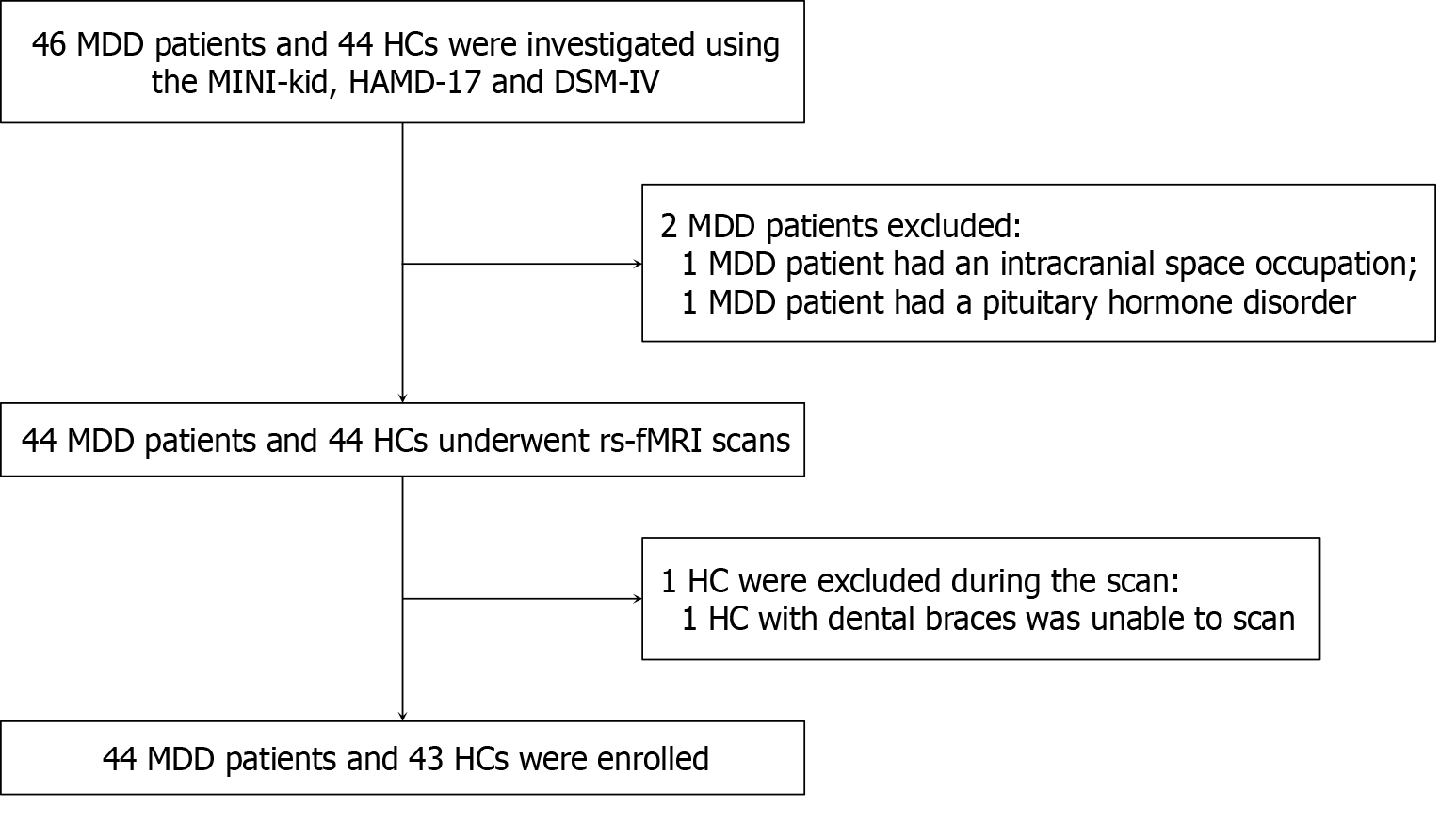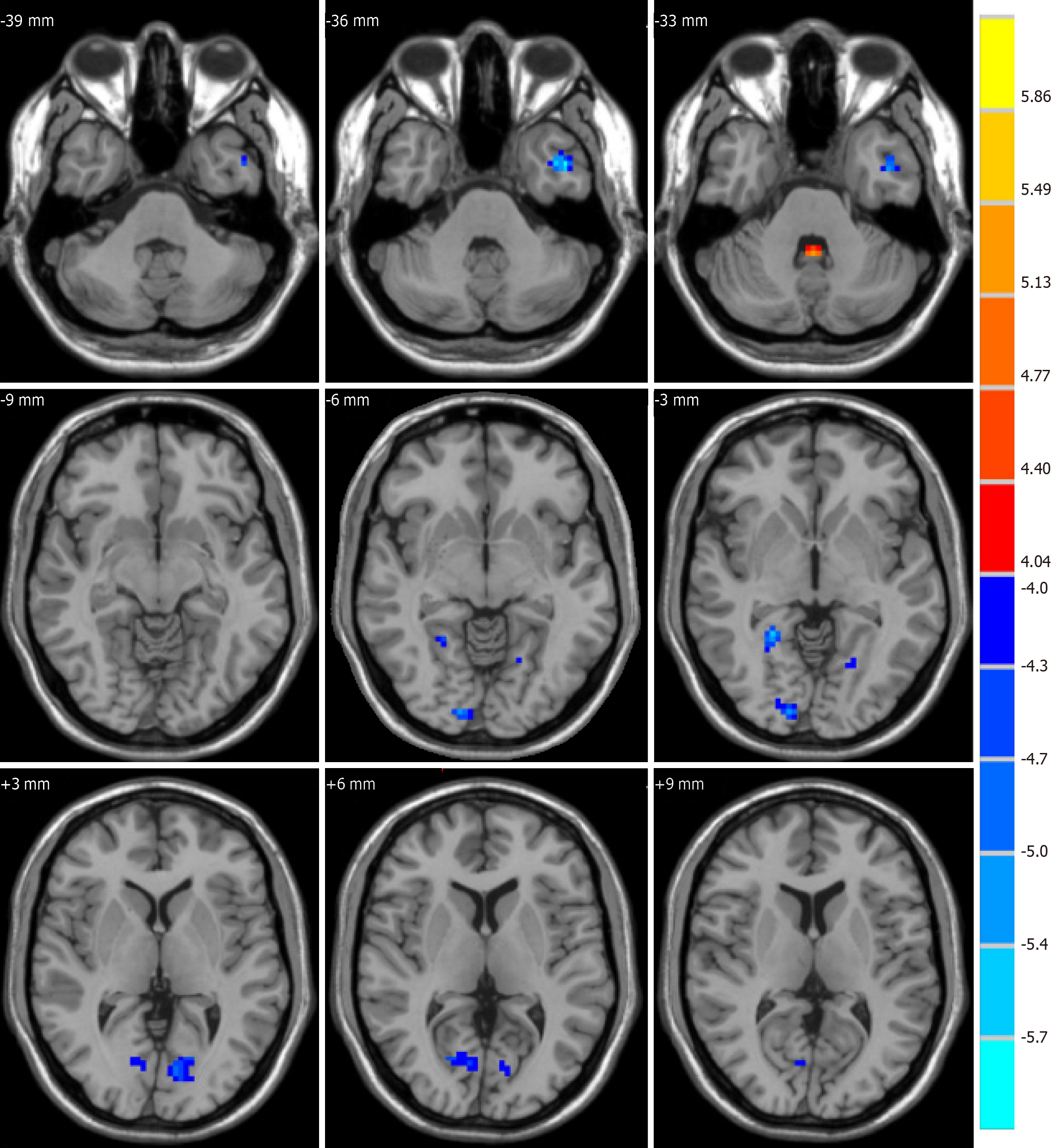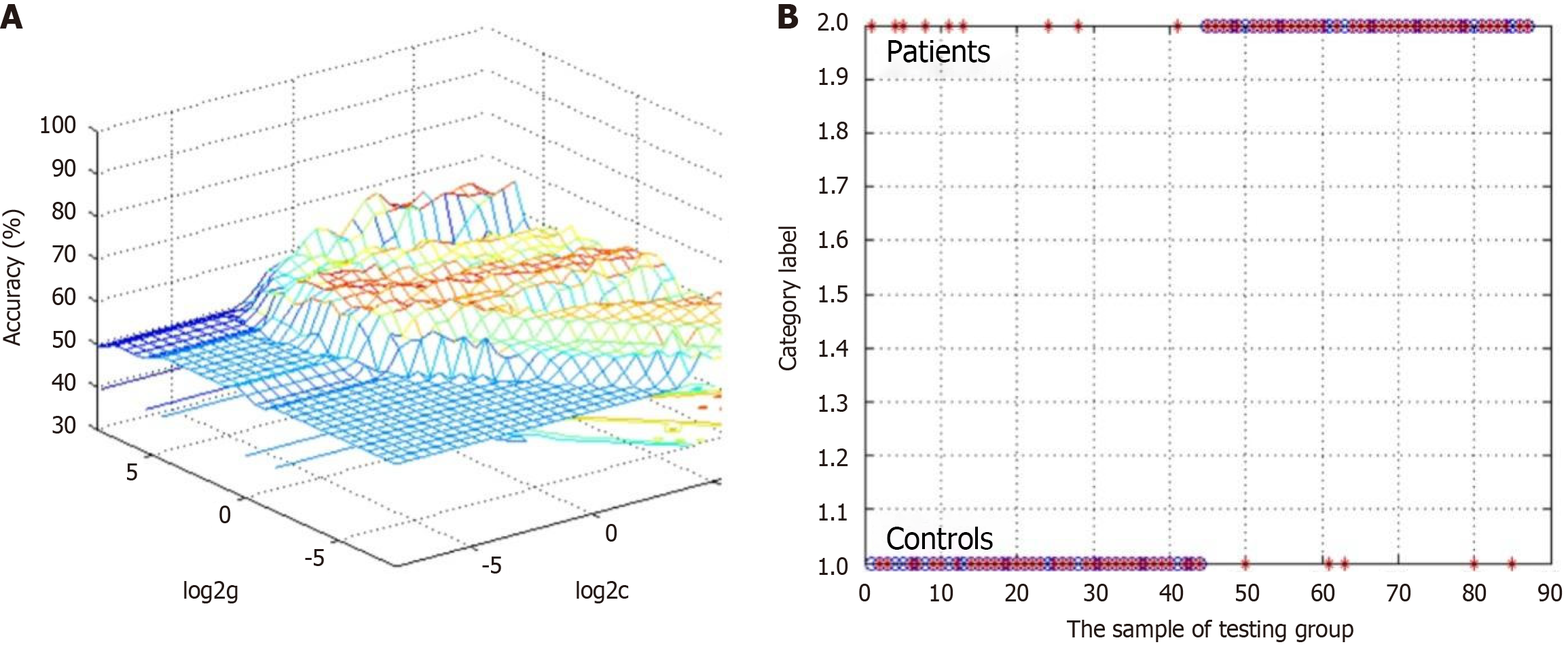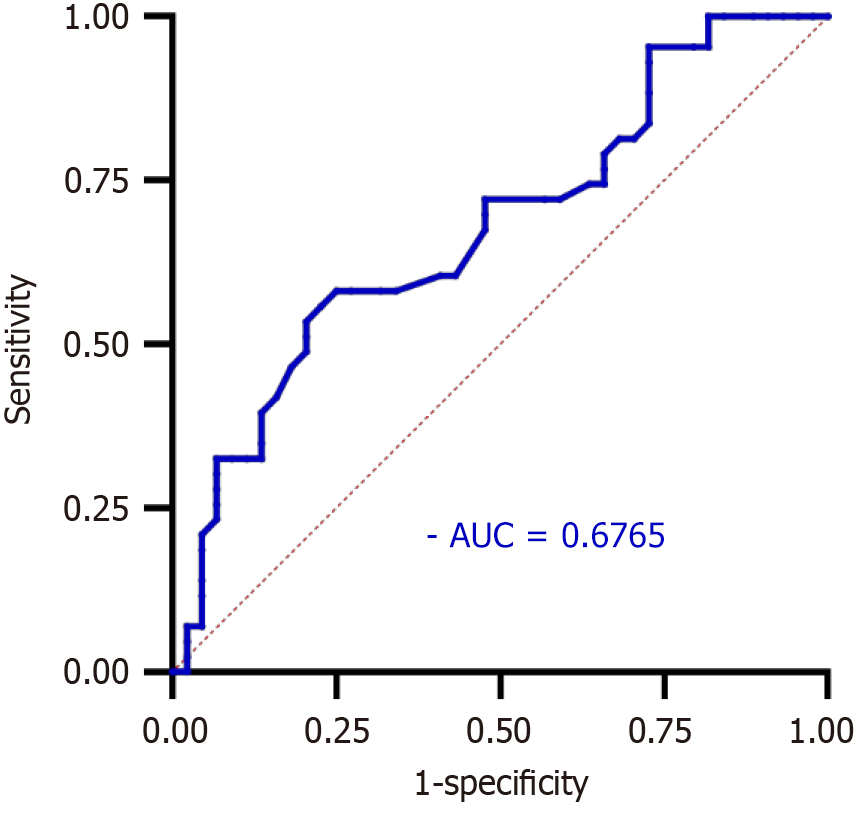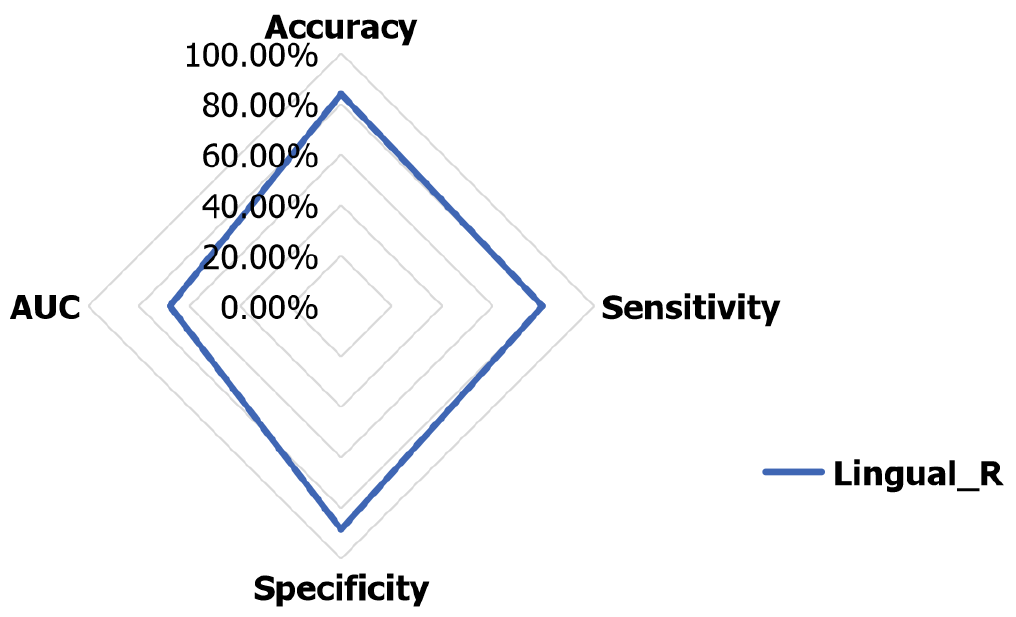Copyright
©The Author(s) 2024.
World J Psychiatry. Nov 19, 2024; 14(11): 1696-1707
Published online Nov 19, 2024. doi: 10.5498/wjp.v14.i11.1696
Published online Nov 19, 2024. doi: 10.5498/wjp.v14.i11.1696
Figure 1 Flow chart of the selection process for the major depressive disorder patients and the healthy controls.
MDD: Major depressive disorder; HCs: Healthy controls; MINI-kid: The mini international neuropsychiatric interview for children and adolescents; HAMD-17: The 17-item Hamilton depression rating scale; DSM-IV: The diagnostic and statistical manual of mental disorders, 4th edition; rs-fMRI: Resting-state functional magnetic resonance imaging.
Figure 2 Differences in functional connectivity values between patients with major depressive disorder patients and the healthy controls.
The color bar represents the t-values in the group analysis.
Figure 3 Visualization of the support vector machine classification based on reduced functional connectivity values in the right lingual gyrus for the differentiation of patients with major depressive disorder from healthy controls.
A: Three-dimensional visualization of support vector machine with the most optimal parameters; B: Classification map of functional connectivity values for the right lingual gyrus.
Figure 4 Assessment of the accuracy of the use of abnormal functional connectivity values in different regions of the brain for distin
Figure 5 The functional connectivity value of the right lingual gyrus is effective for distinguishing between patients with major depre
Figure 6
Radar map showing the accuracy, sensitivity, and specificity of the use of the functional connectivity value in the right lingual gyrus for distinguishing between patients with major depressive disorder patients and the healthy controls, together with the corresponding area under the curve values.
- Citation: Yu ZH, Yu RQ, Wang XY, Ren WY, Zhang XQ, Wu W, Li X, Dai LQ, Lv YL. Resting-state functional magnetic resonance imaging and support vector machines for the diagnosis of major depressive disorder in adolescents. World J Psychiatry 2024; 14(11): 1696-1707
- URL: https://www.wjgnet.com/2220-3206/full/v14/i11/1696.htm
- DOI: https://dx.doi.org/10.5498/wjp.v14.i11.1696









